Introducing
the Fiat Coupe
There is too long a gap between the last Twin Cam engined coupe (the
124) and this one. Fiat were building coupes when some car manufacturers
would struggle to spell the word let alone define a specific market
segment for it. And this Coupe is a terrific example.
It has everything you would expect of a great Fiat. Long before the
production lines ceased in 2000, (sales officially stopped in 2001)
the Coupe was confirmed as a true classic. It’s chic, provocatively
different, visually stunning, ever so Italian and very true to the fastest
of Fiat’s own performance passions. It gave the Fiat brand a much
needed flagship again. A car to aspire to own.
Today there are enough Coupes around to make buying easier, yet few
enough to not dull the senses with familiarity. The normally aspirated
Coupes make a well balanced driving package. The turbo’s give
you more to play with and occasionally to wrestle. Front wheel drive
ensures a regular consumption of tyres, though there are few weak links
in the car. Should you wish to improve performance or add body kits,
then there are well trodden paths and parts to select. I also think
that put next to an Audi TT and Alfa GTV this Coupe not only looks fresh,
but thanks to Pininfarina, it has the visual class of the three.
You really
don’t need me to eulogise any more. If you’ve known and
driven a good Fiat before, why haven’t you tried one of these?
You owe yourself.
Lastly there’s an American guy out there named Chris Bangle who
worked at Centro Stile (Fiat’s design centre) as the Coupe project’s
concept manager. One day I’d really love to talk to him about
what it took to deliver this project. And perhaps he could calm my mounting
impatience waiting for the Coupe’s successor (even though he moved
on from Fiat some time ago).
Coupe History
In the beginning; the Pininfarina badge on the car is because they made
the car in their Turin factory, only the interior and wheels were actually
designed by Pininfarina itself. Even though Pininfarina built the car,
the concept was designed by Chris Bangle within Centro Stile.
The Coupe was
launched late in 1993, but it was 1995 before the right hand drive versions
were being imported into the UK. For the UK it
was offered with the four cylinder 2 litre engine twin cam, either as
a 142bhp normally aspirated 16-valve or a 195bhp Turbo. Both models
also had 5 speed manual boxes, and ABS, twin air bags, power steering
remote central locking alarm/immobiliser and the usual range of electrics
for windows and mirrors. In addition the Turbo had Viscodrive traction
control too.
The
cheapest way to own this sharp looker is via an early, non-turbo, 16-valve
model. These are now going for as low as £2000. But although the
engine and mechanicals are a well known package (developed from the
Lancia Integrale) they suffer expensive damage from things like lack
of proper servicing and oil change abuse. The normally-aspirated cars
have 15-inch alloy wheels as standard, while the turbo models had 16-inch
alloys and traction control. Options included air-conditioning, leather
upholstery and an electric sunroof.
The five-cylinder,
20-valve models replaced the 16-valve versions in December 1996, and
with this power upgrade came a restyled grille, a high-level rear brake
light, a better audio system and revised instruments. Happily, the five-cylinder
turbo is less thirsty than its predecessor, but the cambelt change is
difficult (though not the engine-out job claimed by the dealers if you
are careful with the right tools). The 5 cylinder engine gives better
cruising with its improved economy. The new 5 cylinder 20 valve engine
gave 147bhp from the normally aspirated and 220bhp from the Turbo. Minor
changes also included, thinner spoked alloys revised seats, plus larger
front brakes for the Turbo and revised paint options. Early in 1998
the non-turbo engine was uprated to 154bhp and further minor changes
made to the instrumentation, rear brakes, and bonnet support.
Then in December 1998 a Limited Edition (LE) of the 20 valve turbo was
announced. These are sought-after Coupes - having a six speed box, front
strut brace, cross-drilled front discs, Recaro seats, air conditioning,
a starter button and white fascia dials. The LE also had spoilers and
side skirts added and are worth about 15 per cent more than a five-speed
car. Finally the end-of-line Turbo Plus models (from August 1999) which
have black leather Recaro seats with red stitching, body-coloured side
skirts and front spoiler, and a red finish to the front suspension turret
brace, brake calipers and camshaft covers. All Coupes from that date
had standard air-conditioning, a fully colour-coded exterior, a new
grille, revised seats and a luggage net and hooks in the boot.
New Coupe Prices in 1999
At this final change to the range the on-road prices were as follows:
|
Coupe
|
Model
|
On-Road Price (£)
|
| |
2.0 litre 20valve |
20,200 |
| |
2.0l 20valve Turbo |
22,900 |
| |
2.0l 20valve Turbo Plus |
24,800 |
| Option
Prices |
|
|
| |
Metallic Paint |
249 |
| |
Leather Trim |
1197 |
| |
Sunroof |
498 |
The last Coupe rolled off the Pininfarina production
line at the end of June 2000.
Numbers Produced
Not uniquely in Fiat history, there is some disagreement between Fiat
and Pininfarina about how many Coupes were made. Let’s say no
more than 70,000 were ever produced and the 50,000th being completed
by July 1997 – this would be nearer Pininfarina’s view.
With just under 8000 imported into the UK (dealer and estimated private
new/used imports combined) atleast we have a few cars around to be talking
about!
|
European Production History
|
| 1993 |
16v models introduced in Europe |
| 1995 |
16v models imported into UK |
| 1996 |
(October) 20v models in UK. Turbo gains Sprint
Blue option. Interiors revised. |
| 1998 |
(July) Limited Edition (LE) introduced |
| 1999 |
(March) New version at Geneva Show with LE gadgets
as standard. Turbo and Turbo Plus gets LE package. |
| 2000 |
(June) Production ceased. |
Driving
the Coupe
How does it drive? The standard 4 cylinder 2.0 litre 16 valve produces
142bhp and the turbo option 195bhp. The 5 cylinder delivers 156bhp and
it’s turbo’d brethren 220bhp. The latter will dash to 60mph
in around 6.5 seconds. Members report the standard Pirelli tyres don’t
do it too much justice particularly as the edges of the fronts start
to wear. This tends to emphasise the car’s light but vague steering
feel and feedback especially at town speeds. It has the expected and
almost mandatory Fiat taught ride, and easy driving manners. Push hard
and it understeers off line predictably. The front tyres wear rapidly
particularly if the suspension/ tracking settings are at all out of
alignment. Have these checked regularly. Clutch action is light and
the steering lock fine, on standard width rubber. Put wider wheels on
and like its Tipo ancestors forget the three point turns in favour of
five or seven!
The 5 cylinder turbo behaves impeccably off boost. So you can choose
to potter around town, pick up the wife and groceries, kids with friends
and drop them all off as any self-respecting taxy service should –
with complete docility and no complaints from the car. Then take to
the road on your own for some neck bending torque sessions. Best place
to put this one through its paces is the track or de-limited autobahn.
The mid range torque curve of the Coupe doesn’t disappoint at
around 228lbs/ft max. for the 5 pot turbo. Gear change is positive,
in third and fourth gears the car piles on thru’ 130mph. The standard
car does 150mph. Some of our modified ones in the club make this seem
pedestrian. Very easy to lose your road license in this one! Even on
track days I’ve been left wondering how much more there is to
come – as you run out of straight and scrabble for traction out
of the corners.
By the way traction control is installed on the 16valve turbo option,
and traction control with ABS is standard on both the 5 cylinder models.
When driven on the limit, traction control can’t cure the front
wheel drive cornering antics. The 5 cylinders are more economical and
a have a smoother engine. For modification the 4 cylinder turbo gains
years of development and tuning experience from the Lancia Integrale.
Coupes have often been the target of car thieves so check ownership
history carefully.
The Coupe is a Grand Touring cruiser of the classic coupe variety, with
great looks, and is a performance bargain. Thanks again to badge snobbery,
you can appreciate quality engineering at great value… you really
should try one! Sort the servicing side out – take advice before
you buy and these cars show all the potential and manners of the classic
Fiat twin cams. Just love them!
Buying Guide
The Coupe design was based upon the Tipo/ Integrale floorpan. It is
then a pretty well understood design. Consequently there have been few
weak points in the car’s handling and chassis dynamics. Similarly
the four cylinder engine design with its counter rotating balancer shafts
is reliable, while its 5 cylinder replacement has been a nineties Fiat
revelation in every application.
When waiting lists were long many cars were imported from abroad. A
quick way (though not totally fool proof as the glass can be swapped)
to spot UK cars is to find the UK telephone number for Fiat Security
etched on the window glass.
Whatever price
you paid for these cars, they are still high performance machines. And
they need to be maintained as such - with a budget to match. Any garage
with a good reputation for looking after Integrales can also look after
a Coupe. As we've repeated on several site buying guides - look and
listen carefully to the owner. If the owner hasn't appreciated this,
can't tell you what the service interval is, and who they prefer to
look after the car (with bills), and summarises ownership of the car
by being surprised at its pace, cheepness to buy, and the fact its a
Fiat - (possibly the first twin cam owned) then worry.
The service
intervals between the two engines are different. This is worth me repeating
several times because we've found more than a few 16-valve owners using
20-valve service intervals at club meets. Some of them were lucky -
we got there before too much damage was done. But take note that by
mid life you are risking engine rebuilds from failed cambelts, and clogged
oil galleries with carbon deposits in the wrong places.
Mechanicals
Service intervals for the two engines are different
- 9000mls for the 16valve and 12000mls for the 20valve. By the time
the cars are heading for mid life mileage and beyond this makes a big
difference!
Check the car’s service record. It is essential that good quality
synthetic oil is used and replaced at the service intervals. The 5 cylinder
engine having variable valve timing and hydraulic tappets. These are
prone to head related sticking problems if abused. A full service history
is valuable (but only with supporting bills).
Oil consumption can be high – up to a litre per
two thousand miles on the 5 cylinder turbo.
Recalls by Fiat involved upgrading coolant hoses in
the 20-valve turbo, replacing air conditioning hoses and a modification
to the air bag warning light. All UK cars should have had these modifications
some years ago.
The engine bay is crowded, making engine removal a lengthy task.
The five cylinder engine has an expensive service scheduled at 72,000mls
or 6 years involving cambelt replacement. When engine removal is recommended
by Fiat. It is generally better to have all the belts and tensioners
changed at the same time. It should be noted that, like other twin cams,
it is just possible to change the cambelt without engine removal, providing
a reliable way to mark & hold the cam pulleys in position is found
and well-tailored obstruction tools are available. Beware back street
bodgers however as the 5 pot needs to be canted off its mount to achieve
this, and the lazy will avoid disconnecting (and straining) the exhaust.
It is essential that the cambelt is changed regularly
– especially on hard driven cars. Check the cam cover insides
for any sign of belt flecks. Consider changing the Cambelt when you
buy anyway. The 16-valve is the heavier on cambelt wear and more prone
to jumping a tooth in light impact accidents. Don't wait for the service
interval use between 2/3rds and 4/5ths of the interval depending upon
how hard it was driven.
Gearbox,
the box should not be notchy, or have a 'double gate' feeling on selection,
the synchros dont crunch at all when the oil is warm. Gearboxes displaying
these sorts of traits are rare and to be avoided. The diff and drive
shafts are a well tried design, don't clunk unless worn, and shouldn't
give huge torque steer when accelerating and then onto over run. The
whole package is progressive. Do not expect the traction control to
save you on the turbo models - it won't!
Check clutch and clutch action - replacement is expensive
(engine out costs) so do it all at once if you plan to keep the car.
If you don't want to change to a uprated racing clutch (its heavier
and often noisier) consider having a hybrid built - with new Fiat pressure
plate, and AP friction plate. This is a good compromise for the car.
You'll need an AP agent to do it.
Check the exhaust brackets and manifolds for cracking
- especially on the 16-valve engines. Consider a replacement CAT on
purchase. But the 20-valve turbos have also been showing signs of fatigue-like
cracking on the exhaust manifold at 60 to 85000 miles.
Exhaust
tailpipes - the chrome tailpipe looses its spot weld and tends
to drop off - check for corrosion at the join with the silencer. Fiat
exhaust (from Cat) is about £160 fitted, Supersprint £280,
see table below for more options.
Turbos
have no real differences in the Coupe - check the car from cold, on
start up the turbo seals will betray wear signs by sending water vapour
out the exhaust as white smoke, after a run the car left on tickover
will send blue smoke out.... the problem is to gauge how heavy this
is. The Coupe will burn a small amount of oil anyway. If it is hazey
with no noticeable oil smell its probably ok. The turbo should come
in at about 2.5 - 3 thousand rpm with a big torque jump. Boost is limited
under certain conditions by the ecu, in the pre '98 5 pots in 1 &
2, but not by the traction control if wheels are spinning.
Check brake discs and calipers – heavy wear point.
The Brembo standard issue are hard pressed to keep up with the car's
weight. They also need as much cooling as you can duct in if you drive
hard. Discs to tend to warp though so check for judder under braking.
The inside pad tends to wear faster too.... budget to replace everything
if you can.
Check front brake pads - inners wear twice as fast
as outers.
Suspension design is a known Fiat layout causing little
problem unless accident damaged. But any wear on the front wishbones
needs to be tackled. Play here in the bushes detracts from the feel
of the car. The wishbones are quite easily damaged through kerbing on
the move etc. New lower wisbones are needed every 70,000 miles or so.
Note that bushes are common across some Alfas and some Lancias if you
are looking for upgrades (can use tuning shops from Alfa in some cases)
Check
Steering - the 20valve turbo shares its rack with the Alfa
GTV - 2.2 turns lock to lock, the16VT layout is similar to the Tipo.
Clunks could be from drop links, wishbone bushes or the antiroll bar
links and need to be tackled. Wishbones - tend to be
clunks on hard accelerating and braking - Antiroll bar mounts
clunk an floor when under body roll suspension changes - wandering
steering when straight on motorway all three. Consider strut
braces too.
Check
the front tyres for even wear across the tread - and the front/rear
wheel alignment on the road.
This also means
careful scrutiny of the suspension lower wishbone arms and bushes is
needed. At 6 years old and over consider a complete re-bushing of the
car's suspension.
Hand
brake linkage provides a good check re: diligent servicing.
They will cause little trouble if regularly greased and checked. Clean
and greased with free action at both ends is what's expected.
Body
Rust should not be a problem. The cars were fully galvanised. It is
possible that after market panels have been used after an accident that
are not galvanised. Remember welding will remove the galvanic layer
too
The main body panels are large thin and expensive to replace. Examine
the bonnet for stone chips and dents (both sides). And the engine undertray
for signs of abuse. But the non-metallic paints used are soft and prone
to damage from stones etc.
Check the cars flanks for damage, again the B post
to tail light is one panel costing around £740. The door skin
is also expensive, smooth and prone to denting.
Check for repairs. Look at how any bonnet scoops are
installed – the supporting frame shouldn’t be removed or
cut (if it was then what steps were taken to re-stiffen the bonnet?).
Early (pre1998) cars had a complicated bonnet strut needing release
before closing – leading to breakages so check it.
Boot lid can be distorted by repeated closing/being
push down from one side, and the internal lock release can stick closed.
Minor points to sort really.
Electrics
Check all electric motors for ease of operation (including
windows, mirrors etc)
Check
operation of built in rear window aerial - they tend to lose
efficiency.
Relays
tend to stick in mid life onwards cars - don't assume everything is
working and check operation.
Make sure you have the Red Code Key and key fob for
the car. If you loose them both then door and ignition locks, and the
ECU have to be replaced. Expensive.
Door
Mirrors are electrically adjustable & heated when the rear
screen de-mister is switched on. Check this works, the mirrors are complex
and new ones expensive.
Alarm
- Immobiliser - Check the alarm and central locking is working,
an aftermarket Category 1 alarm is around £250 and upwards.
Headlamps
- are toughened plastic with a thin protective layer which yellows with
age. Polish it and it can start to peel. Then they are more prone to
scratch and chip damage. The plastic covers can not be simply replaced,
and the replacement unit retails for £250 each.
General
Accident damaged cars tend to jump cam belt teeth in
quite light accidents - particularly the 4 pot. Beware of slight,
regular missing at tickover and low revs when accompanied by
a tiny similarly timed ‘clacking’ from the cam box. On the
other hand a slightly irregular tickover alone is quite common. Seriously
bent valves do not necessarily show catastrophic symptoms at first.
It’s also not so difficult to over-rev the engine. Compression
test for cylinder and valve leakage.
Lumpy
tickover can start with a dirty (sticking) idle control valve,
partially blocked injectors, malfunctioning sensors, up into the head
problems above. Take someone along who can tell the difference!
Check
for clumsy screen installation and rear window installation
on the window glass - damage to the rubbers and plastic runs to hundreds
of pounds very easily
Check
for entry/ exit tears from the rear seats - can be expensive
to solve.
Check
the Interior for marks stains and scratches as the interiors,
especially the leather ones, hold their price. Have a close look at
the interior, dash, door and seats. If you are buying get the seats
from the LE or Turbo plus they offer more lateral support.
The
standard Clarion Sound System is fine.
FAQs
Things you might think of modifying…
Turbo Plus honeycombe grill? Around £40
Subtle styling? Try the rear spoiler. But for looks only, don’t
expect downforce or drag factor improvements.
Full-on styling? If you prefer the look of the Turbo Plus then
there are lots
Best tyres? I’ll let you lot argue over the choices –
choose well to transform the car’s feel.
Best wheels? I’d stay light weight – definitely
needs bigger wheels to look its best too. Bigger wheels shouldn’t
mean heavier wheels if you want to improve the handling!
Lowered springs? Yes many options
Anti roll bars uprated? Yes Eibach are good though not straight
forward to install (bar passes close to gear linkage at the rear of
the engine bay. Lots of components removed for access.
Strut Brace? Yes of limited effect though - try OMP
Brakes? Try AP, bigger Brembo (again), or High Spec for improved
anchoring. New Alfa calipers can fit (with new offset disk rotor and
bell) too.
Brake Pads? Responds well to several – any suggestions?
Updated Traction control? Yes motorsport derived alternatives
– e.g. Race Logic
Exhaust? S/steel there are several to choose from – if
you want a real headache use resonators
Body Kits? Amongst others, quality body kits can be found from
the links section.
Types
of Coupe
The Coupe was
launched late in 1993,
1995
16valve 2 litre engine twin cam, 142bhp.
1995
16valve turbo, 195bhp.
Both models
also had 5 speed manual boxes, and ABS, twin air bags, power steering
remote central locking alarm/immobiliser and the usual range of electrics
for windows and mirrors. In addition the Turbo had Viscodrive traction
control too. Options included air-conditioning, leather upholstery
and an electric sunroof.
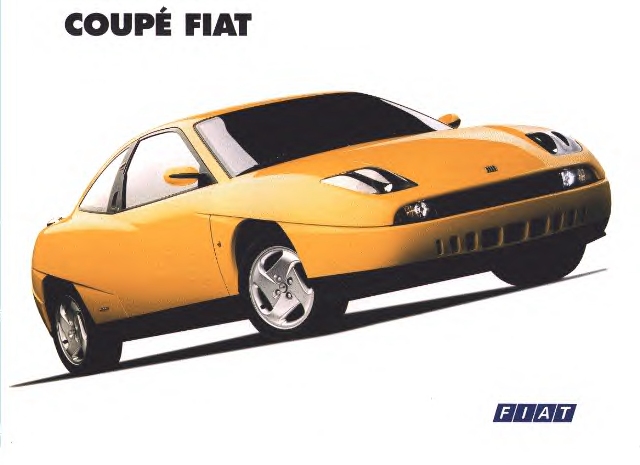

1996
20valve 2 litre, 147bhp.
1996
20valve turbo, 220bhp.
With this
upgrade came a restyled grille, a high-level rear brake light, a better
audio system and revised instruments. The five-cylinder turbo is less
thirsty than its predecessor and the 5 cylinder engine gives better
cruising with its improved economy. Minor changes also included, thinner
spoked alloys revised seats, plus larger front brakes for the Turbo
and revised paint options. Early in 1998 the non-turbo engine was uprated
to 154bhp with further minor changes made to the instrumentation, rear
brakes, and bonnet support.
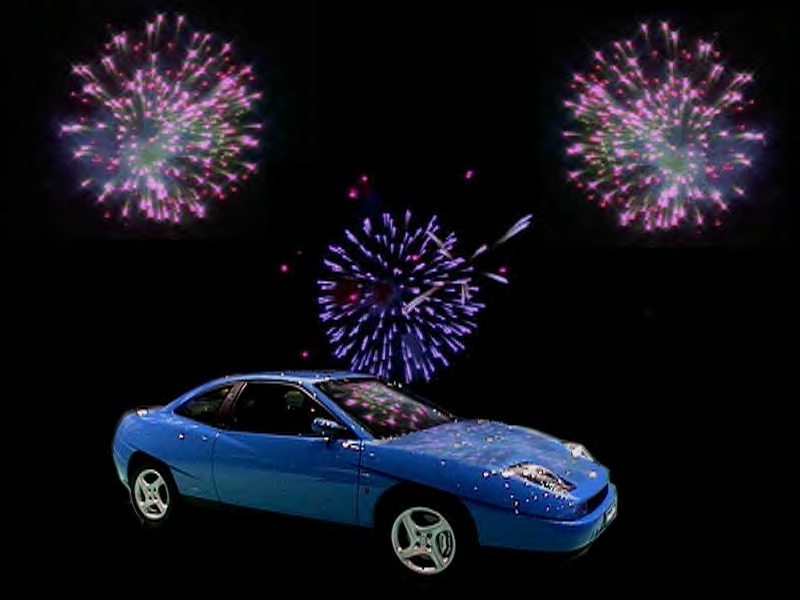
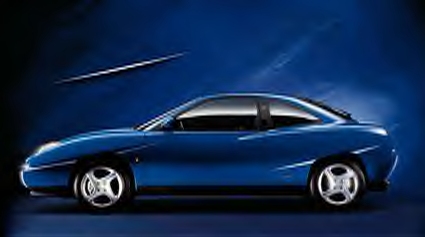
In
December 1998 a Limited Edition (LE) of the 20 valve turbo
was announced, having a six speed box,
front strut brace, cross-drilled front discs, Recaro seats, air conditioning,
a starter button and white fascia dials. The LE also had spoilers and
side skirts added and are worth about 15 per cent more than a five-speed
car.
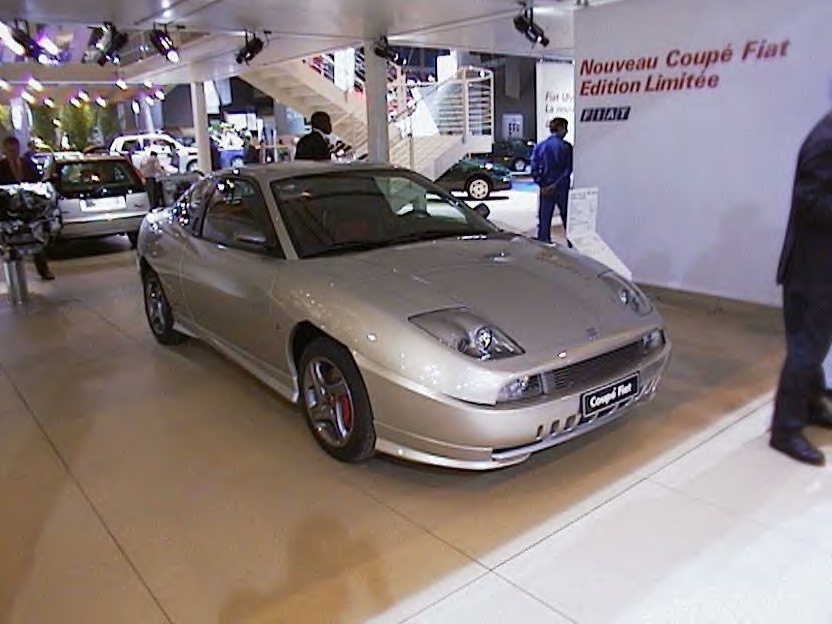
August
1999 t he end-of-line Turbo Plus
models have black leather Recaro seats with red stitching,
body-coloured side skirts and front spoiler, and a red finish to the
front suspension turret brace, brake calipers and camshaft covers. All
Coupes from that date had standard air-conditioning, a fully colour-coded
exterior, a new grille, revised seats and a luggage net and hooks in
the boot.
SFC
Gallery
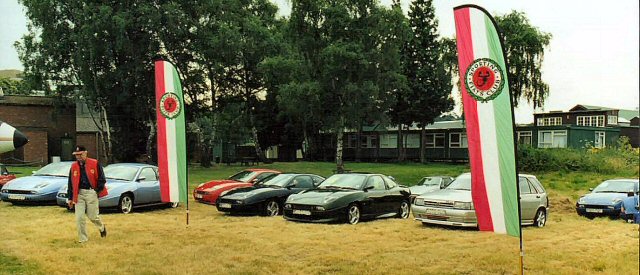
Coupe
Page Links
Advice
and Tuning
MotorSport-Developments
have attained a considerable reputation for sorting mapping and misfire
problems of tuned Coupes and Deltas that other companies struggle with.
Based in Blackpool, their advice is well worth the trip. Check the website
articles on turbos and actuators for some straight forward explanations
too.
Zoo
Motorsport can really set your steed up for that track day, including
their corner weight service. Suspension and handling specialists, they
also offer a one off part manufacture service when you're stuck. Motorsport
Fiateers should note!
Turbo advice
from; Turbo
Dynamics and Turbo Technics
Body and Tuning Kits
ASD Styling provide
some good looking kits. The
Tuning Shop has a well laid out site to compare them, and Eurospoiler,
Hofele, Hormann and Postert options.
Cadamuro
Italian styling for aerodynamic aids and body kits. UK agents Forza
Tuning and L&M
Merkur
in Bamberger Str. 61 96215 Lichtenfels. Deutschland.
Tel: 09571/5007 (add German international code)
A German Tuner who has lots of goodies for your Coupe.
Hofele
Design.mostly VW Audi but some parts are useful on the Coupe.
Hörmann Motorsport
Kempten (Germany) U.K. Dealer: Racing Brands of Pangbourne Berkshire.
Located in Germany Hormann offer body kits, tuning packages and suspension
options.
Novitec Automobile Hochstraße
8 87778 Stetten (English agent : Forza Tuning, St Leonards Rd, NW10
6ST Tel: 0208 8386320) Innovative and stylish options - a reputation
for very well thought through body and tuning options.
Postert Design for subtle rear/spoiler
and side styling plus wheels - worth a look. ESSEN (Germany)
MS
Design have parts but no longer stock Coupe bodykits. LS
Design in the UK
In recent
years the choice of options available from some of these suppliers has
been reduced - particularly the German suppliers Hormann, Hofele and
Novitec...
Parts
Dalhems after market parts supplier
Sachs BOGE suspension site
HR Springs handling components
Power Alfa After market parts
supplier
Power Fiat after market
parts
Longlife
offer tailored stainless steel exhausts
Alternative
Component Suppliers
| Supplier |
Suspension |
Springs |
Strut Brace |
Air Filter/
Box |
Exhaust |
Website |
| Koni |
• |
|
|
|
|
|
| Eibach |
• |
• |
• |
|
|
|
| Bilstein |
• |
• |
|
|
|
|
| Leda |
• |
• |
|
|
|
|
| Spax |
• |
• |
|
|
|
|
| Avo |
• |
|
|
|
|
|
| OMP |
• |
• |
• |
|
• |
|
| Hörmann |
• |
• |
|
|
• |
|
| Novitech |
• |
• |
|
• |
• |
|
| K&N |
|
|
|
• |
|
|
| ITG |
|
|
|
• |
|
|
| Jamex |
|
• |
• |
|
|
|
| Sparco |
|
• |
• |
• |
|
|
| Pi |
• |
• |
|
|
|
|
| |
|
|
|
|
|
|
| Janspeed |
|
|
|
|
• |
|
| Powerflow |
|
|
|
|
• |
|
| Supersprint Ansa |
|
|
|
|
• |
|
| Jetex |
|
|
|
|
• |
|

